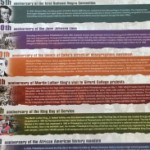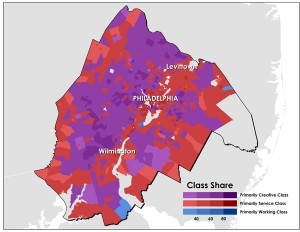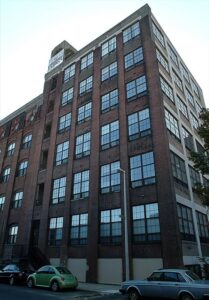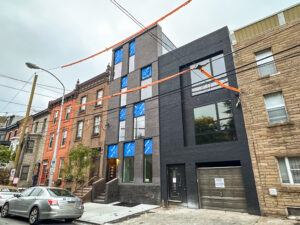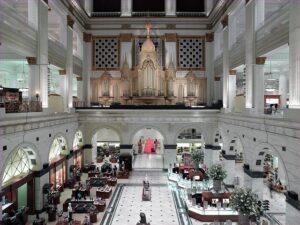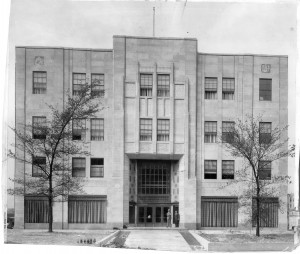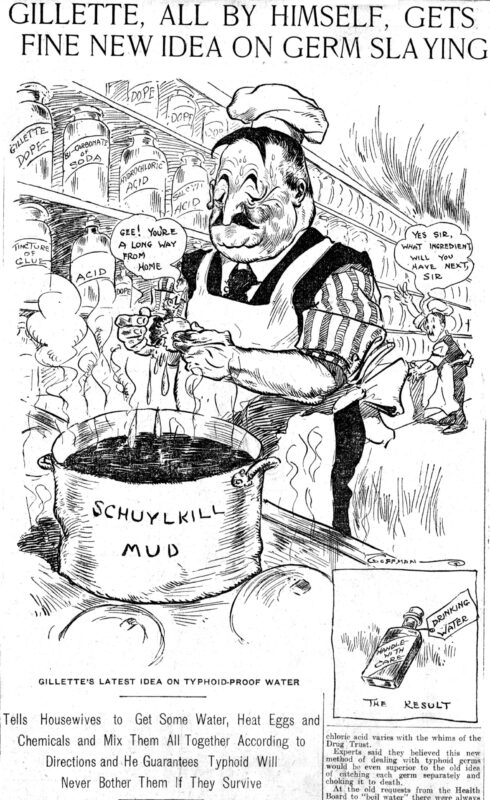The regional shopping mall is so much a part of modern American culture it is easy enough to forget how much more was expected of it with its introduction in the 1950s than simply being an “engine of commerce.” Taken together with David Sullivan’s entry on department stores, Matthew Smalarz’s essay on shopping centers suggests some of what has been lost in the geographic shift of retail activity over the past half century.
Regional shopping centers cropped up precisely at that point when the dispersion of metropolitan population introduced the phenomenon of suburban sprawl. The idealists behind the regional centers hoped their structures would help anchor new communities and give shape to ex-urban land use. As a writer for the Department Store Economist proclaimed in1954, “…no construction is more dynamic than the shopping center or as likely to influence a reform of the usual urban and suburban hodgepodge….A new generation of department store men and women…are showing the same high responsibility to the communities that their grandfathers showed when they helped to create the great downtowns which we know today in hundreds of cities.”
In their early days, suburban malls hosted fashion shows, opportunities for children’s play, high school proms, and even classical music concerts. If food courts lacked the grandeur of the tea rooms that female shoppers once gathered in downtown department stores, they nonetheless offered opportunities for sociability among women beyond the privacy of their homes, where so much of their attention was otherwise directed if they did not hold down fulltime jobs. For years the Cherry Hill Mall in New Jersey served as the gathering point for a number of former Camden residents whose dispersion outside the city in the 1950s and 1960s left them hungry for familiar faces and an opportunity to reminisce about their former lives.
Over time, these facilities became increasingly privatized, as community-oriented events aimed at generating a sense of loyalty to place as well as the crowds to animate them gave way to simply enticing paying customers. Shortly after her important book, A Consumer’s Republic appeared in 2003, I invited author and Harvard University professor Lizabeth Cohen to do a talk and sought to locate it in the courtyard of the Cherry Hill Mall, which received a good deal of attention in her book.The managers of the property said she could do so, but only after paying a $5,000 fee to gain access to the mall’s customers. As an alternative, they suggested the mall’s only bookstore, which we rejected after the manager failed to recognize the name of the publisher: Knopf.
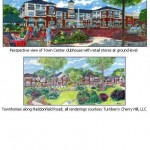 The great irony of the commercial redevelopment of the Garden State Race Track nearby was the argument that it would fulfill Cherry Hill’s need for a town center. Apparently no one remembered, let alone imagined the mall once had been touted for serving just that function. As the site developed into an amalgam of different pods—for big box stores and clusters of housing—it served less of a model of “new urbanism” and more of an illustration of the basic problem critics point to in suburbs: physically induced social isolation.
The great irony of the commercial redevelopment of the Garden State Race Track nearby was the argument that it would fulfill Cherry Hill’s need for a town center. Apparently no one remembered, let alone imagined the mall once had been touted for serving just that function. As the site developed into an amalgam of different pods—for big box stores and clusters of housing—it served less of a model of “new urbanism” and more of an illustration of the basic problem critics point to in suburbs: physically induced social isolation.
Given the chance to create better communities on relatively open land in suburbs in place of urban centers that had evolved over time, developers fell well short of creating communities that integrated effectively the needs that enable thriving communities. We all have our favorite shopping destinations, but it’s hard to think of them today as the civic investments they were originally intended to be.
